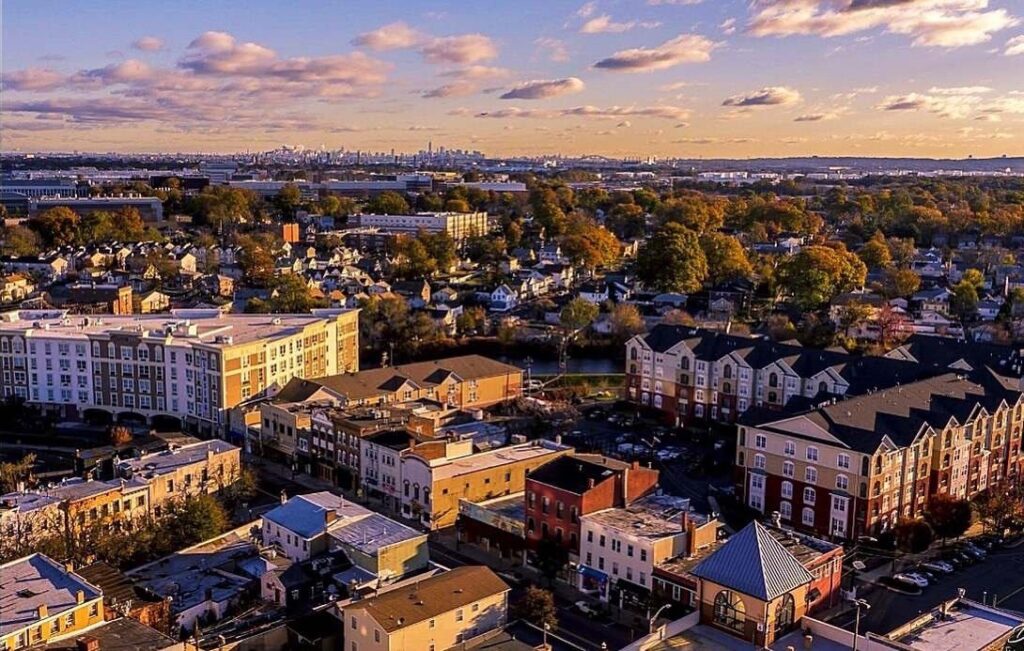
A Look at Rahway
Submitted by Al Shipley, City Historian and Rahway Library Research Consultant
1924
The invited speaker at a meeting of the Rebecca Cornell Rahway Chapter of the Daughters of the American Revolution (DAR) spoke on immigration, a hot topic in the 1920s. It was the speaker’s opinion that the government should restrict the influx of immigrants and expressed a need for a policy of selective immigration. The presenter also promoted the view that all publications should be printed in English. The more things change…
The Union County Park Commission purchased 129 acres of land located on the west side of St. Georges Avenue from the City of Rahway with plans to create a county park. The acreage, consisting of two parcels known as the Castor-Denman property and the Rahway Poor farm, had previously been bought by the city to help expedite the plans of the park officials. The action assured that Rahway would have a beautiful park within the city limits that would be managed and maintained by the county.
The World War 1 “Baby Boomers” were reaching school age and the Board of Education was discussing the need for more school buildings and for renovations to the older ones. The new Franklin School, built in 1922, was already over-crowded and Lincoln, Washington, and Columbian were antiquated. Plans soon got underway for the construction of Roosevelt and Cleveland Schools to give relief to the conditions at Franklin. Public school student enrollment reached 2,300 when schools opened in September, the largest number in the city’s history. St. Mary’s Parochial School had also reached its highest enrollment and plans were being made for a new, more modern building.
After the war, the Ku Klux Klan reared its ugly head and their hate-filled activities began to surface in cities in both southern and northern states. By the middle of the decade, their shadowy presence was being felt in cities throughout Union County including Rahway. In July, Rahway Police received a report of a cross burning on the southeast corner of St. Georges and Central Avenues. The noxious presence of the Klan would become even more overt in 1925 and 1926.
1949
Construction of the housing development on the west side of Madison Avenue on the acreage behind Rahway High School began in the spring of 1949. More than 360, single family homes would eventually be constructed. Plans for building projects were also commencing for the vast area on the west side of St. Georges Avenue between Lake Avenue and Colonia Boulevard. By the end of the year, Rahway broke all records for new construction.
New homes in the western section of the city meant new schools were needed for the children who would grow up in these neighborhoods. In May, the Board of Education purchased property on Madison Avenue next to the high school as the site for a new elementary school. Madison School would open in September, 1953.
The scourge of polio, the dreaded, highly contagious, infectious disease, that had been crippling adults and children during much of the first half of the 20th century, would reach pandemic proportions by the late 1940s. In August, eight polio cases, including one death, were reported by the Rahway Health Department. Union County officials reported 26 cases, including three deaths, with the state totaling 227 cases in the same month. The pandemic would get worse and would reach its peak in 1953 with 58,000 cases reported in the United States. The Salk vaccine (1952) and the Sabin oral vaccine (1955) helped to end the pandemic and control the disease.
1974
In October, 1973, the Arab oil nations placed an oil embargo that targeted several nations including the United States that would last until March of 1974. Wide-spread shortages of oil and gasoline soon caused serious problems for most Americans as long lines of cars leading to gas stations stretched for blocks. Wait time to get served could take hours. To lessen the hardships, mandatory state regulations were put into place on Monday, February 11. Automobile owners with even numbered license numbers would get gas on even numbered days, while odd license numbers would get served on odd days. A minimum purchase of $5.00 was required to get gas. If the car’s tank was more than half full, no gas would be pumped. Station hours were staggered to help deal with the crisis. The embargo finally came to an end after six months of inconvenience.
A site for a new city hall-police station to stand on the corner of Main Street and Milton Avenue was finally selected and approved at a meeting of the city council in early February. Although the project was given approval by a vote of the council in June, the complex was not completed and dedicated until 1982.
Rahway Boy Scout Troop 141 was certified by the American Revolution Bicentennial Administration to be the first official Bicentennial Scout Troop in the nation. Sponsored by the Second Presbyterian Church, the troop was presented with the Bicentennial Flag during a ceremony at the National Office of the Boy Scouts of America in North Brunswick.
